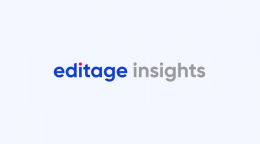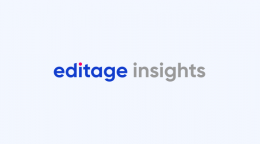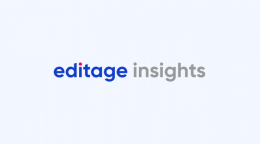How to ensure bias-free and inclusive language in your research papers

As researchers, you communicate findings and ideas through various forms of scholarly communication, including conference presentations, grant proposals, and of course, research papers. The language used in these communications reflects not only your knowledge and expertise, but also your values and attitudes towards the people and phenomena you study. Therefore, it is necessary to use language that is inclusive and free of bias, that respects the dignity of human beings, and that does not perpetuate stereotypes or discrimination.
Inclusive and bias-free language is not new in academic writing. In fact, many style guides and journals have provided guidelines on how to avoid biased language for decades. However, these guidelines are not static or universal; they evolve over time and vary across disciplines and contexts. As a researcher, you need to be aware of the current best practices and conventions in your field, as well as the expectations and preferences of your target audiences and study participants.
Here, I provide a brief overview of how inclusive-language guidelines have evolved and some key considerations. I will also list some important standard guidelines on how to use inclusive and bias-free language in your research papers, with some examples and discipline-specific notes.
How inclusive language guidelines have evolved
Guidelines on inclusive language are not static. What constitutes inclusive and bias-free language in academic writing has been influenced by various social movements and scholarly debates. For example, the feminist movement in the 1960s and 1970s challenged the use of sexist language that excluded or marginalized women1, such as using “man” to refer to all human beings or using generic masculine terms for professions or roles (e.g., chairman, policeman, fireman). Similarly, the civil rights movement in the 1950s and 1960s raised awareness of the need to use respectful and accurate terms for racial and ethnic groups.
More recently, the LGBTQ+ and disability rights movements have advocated for person-first language2 and self-identification, which emphasize the agency of individuals rather than their identity labels or conditions. Online platforms have also enabled more voices and perspectives to be heard and shared, creating more opportunities for dialogue and feedback on how to use inclusive and bias-free language.
Key considerations for using inclusive-language guidelines
Inclusive language guidelines are not rules or laws
Guidelines are based on current usage and preferences. They may change over time or differ across regions, communities, or contexts. A term that is considered respectful in one context can be offensive in another. One example is the term “coloured,” which in South Africa is term that people of mixed heritage use to identify themselves3. In most other English-speaking countries and context, the term “coloured/colored” would be offensive if applied to a person. Therefore, we should be flexible and open-minded when using them and respect the choices and preferences of others.
Inclusive language guidelines are not one-size-fits-all
Guidelines may vary depending on the purpose, audience, and venue of your communication. For example, some terms or expressions may be appropriate or acceptable in personal settings, but not in professional ones. Some may be required by certain publishers, but not by others. It is critical to check the guidelines for a publication before submission.
Inclusive-language guidelines are not meant to censor or restrict your expression
Consider these guidelines as facilitators of communication rather than restrictions. They are meant to enhance communication by making it more accurate, respectful, and inclusive. They should not prevent you from expressing your opinions or arguments; instead, they should help you express them so that they do not offend or alienate your audience. Inclusive language guidelines are not meant to impose a uniform way of viewing people or the world; they are meant to acknowledge the diversity and complexity of human experiences and identities4.
Common guidelines on how to use inclusive and bias-free language
Here are some of the most important guidelines on how to use inclusive and bias-free language in your communications, along with some examples and discipline-specific notes. Please note that this is not an exhaustive list; I recommend consulting the style guides and instructions of your target journals or publishers for more specific guidance.
Use person-first language when referring to people with disabilities or chronic conditions
Person-first language puts the person before the disability or condition rather than defining people with these traits. For example, it is generally recommended to say “a person with autism” over “an autistic person.” We should also avoid using terms that imply pity, weakness, or abnormality, such as “suffering from,” “afflicted with,” or “handicapped.” Some “less-offensive” neologisms have been introduced, but some are considered offensive by people with disabilities, such as “differently abled.5”
Use respectful and accurate terms when referring to race and ethnicity
Capitalize terms for ethnicity. For example, say “Black” or “African American,” not “black.6” Avoid using outdated or ambiguous terms, such as “mulatto,” “oriental,” or “minority.”
Use inclusive terms when referring to people’s gender expression and sexual orientation
A very common error in manuscripts is using “sex” and gender interchangeably. “Sex” usually refers to one’s biological sex, whereas gender reflects their social presentation and internal self-identity7.
When speaking about non-heterosexual people in general, we should say “LGBTQ+” or “queer,” not “gay.” Also avoid using terms that imply a binary or fixed view of gender or sexuality, such as “opposite sex.”
An important caveat is in medical literature, particularly in epidemiology; here, “men who have sex with men (MSM)” is preferred over “gay/bisexual men,” as the terms “gay/bisexual” may lead to underreporting by men who engage in these behaviors yet identify as heterosexual8.
Use inclusive and gender-neutral terms when referring to people’s professions or roles unless the gender is relevant or specified
For example, say “chairperson” or “chair,” not “chairman.” Avoid using terms that imply a male default or dominance, such as “mankind” or “manpower.”
Use gender-neutral pronouns when referring to people of unknown gender
Use “they/them/their,” not just “he/him/his” or “she/her/hers.9” Also avoid those implying a binary or fixed view of gender, such as “he/she.”
Be precise with ages
It is better to refer to specific age ranges than use terms like “the young” or “elderly people10,” which are imprecise and can imply naivety or lack of capability, respectively.
Some technical terms have been updated
It used to be common to encounter “whitelist/blacklist,” “male/female,” or “master/slave” in computer science. However, these terms carry connotations of race, sexuality, and slavery, respectively. New, neutral terms have been introduced to supersede the old ones11.
General tips on keeping inclusive
Educate yourself about the evolving guidelines, both in your field and beyond
Read the style guides and instructions of your target journals or publishers, as well as other reputable sources of information and guidance. Various style manuals, such as APA12, Chicago13, and MLA14 have produced specialized resources with examples of terminology to avoid.
Know when to use resources to check whether a usage is appropriate
Any time people are referred to generally, ensure that you are gender-neutral. For any labels applied to individuals or groups, briefly check if the label is appropriate before using it in your paper. Besides the aforementioned guides, Webster’s and Oxford English dictionaries are the most trusted reference materials for American and British English, respectively. Proofreading software usually contains options to flag biased language, and there are even specific online tools such as Textio15 that can check your gender bias, inclusivity, and impact.
Adhere to any instructions provided by the target journal or publisher
When there is a discrepancy between common usage and guidelines from target publication, the target publication’s preferences should take precedence. Follow these requirements and use their preferred terminology and conventions. If they do not provide any specific guidance on inclusive and bias-free language, use the general guidelines provided in reputable sources.
Allow research participants to self-identify
When producing any surveys or questionnaires, allow self-identification to avoid boxing participants into categories that they do not identify with. For example, in a study that includes sexual orientation, in addition to providing a list of options, you can allow participants to freely enter their orientation in case they prefer to self-describe.
Define and explain expressions appropriately
For example, if discussing people with dwarfism, you should include the medical definition of dwarfism to ensure that the term is being applied precisely. Likewise, any non-quantifiable or self-identified labels, such as ethnicity, should include a mention of the social context of these labels and their usage.
Conclusion
It can be challenging to apply the correct terminology every time, particularly if English is not your first language. However, inclusive language guidelines are just that—guidelines. People are not expected to memorize all guidelines and use them without fail. There are often exceptions to a guideline, and well-meaning people often use terminology in error due to misconceptions or outdated knowledge. The most important point is to listen to feedback when we make mistakes and use the resources at our disposal to communicate clearly and without bias.
References
1. Liddicoat, A. J. Feminist language planning. Curr. Issues Lang. Plan. 12, 1–7 (2011).
2. Person-first and Destigmatizing Language. National Institutes of Health (NIH) https://www.nih.gov/nih-style-guide/person-first-destigmatizing-language (2022).
3. Coloureds. Minority Rights Group https://minorityrights.org/minorities/coloureds/ (2015).
4. Q&A: Why Inclusive Language Matters. Duke Today https://today.duke.edu/2021/05/qa-why-inclusive-language-matters (2021).
5. Disability Language Style Guide | National Center on Disability and Journalism. https://ncdj.org/style-guide/.
6. Coleman, N. Why We’re Capitalizing Black. The New York Times (2020).
7. Should I use the word ‘sex’ or ‘gender’ in my scientific research paper? | Editage Insights. https://www.editage.com/insights/should-i-use-the-word-sex-or-gender-in-my-scientific-research-paper.
8. Men Who Have Sex with Men (MSM). https://www.cdc.gov/std/treatment-guidelines/msm.htm.
9. Bodine, A. Androcentrism in prescriptive grammar: singular ‘they’, sex-indefinite ‘he’, and ‘he or she’. Lang. Soc. 4, 129–146 (1975).
10. Age-inclusive language: Are you using it in your writing and everyday speech? | Institute for Public Health | Washington University in St. Louis. https://publichealth.wustl.edu/age-inclusive-language-are-you-using-it-in-your-writing-and-everyday-speech/.
11. Word list | Google developer documentation style guide. Google for Developers https://developers.google.com/style/word-list.
12. Bias-free language. https://apastyle.apa.org/style-grammar-guidelines/bias-free-language.
13. The Chicago Manual of Style Online: Chapter 5 Contents. https://www.chicagomanualofstyle.org/16/ch05/ch05_toc.html.
14. Bias Free Language - MLA Format Guidelines - Library Guides at Texas State Technical College. https://tstc.libguides.com/mla/language.
15. Textio. Textio – Interrupt bias in performance feedback and recruiting. Textio https://textio.com/.
Want to ensure that your manuscript adheres to evolving norms and journals instructions for preferred usage? Try Editage’s English editing services, where a professional academic editor performs a thorough check of the language and style used in your article.
Comments
You're looking to give wings to your academic career and publication journey. We like that!
Why don't we give you complete access! Create a free account and get unlimited access to all resources & a vibrant researcher community.

Subscribe to Manuscript Writing
Translate your research into a publication-worthy manuscript by understanding the nuances of academic writing. Subscribe and get curated reads that will help you write an excellent manuscript.













